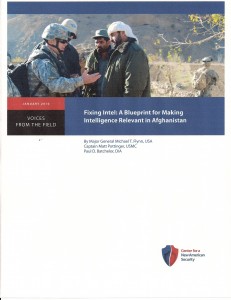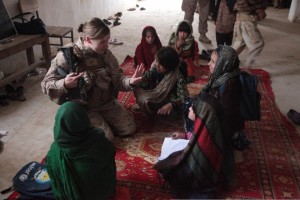 Major Contribution That Congress is NOT Paying Attention To,
Major Contribution That Congress is NOT Paying Attention To,
March 4, 2007
Stephen Flynn
This is a major contribution to national security & prosperity that is being actively ignored by Congress. We must all buy the book and force the issue. HR 1 from the House purports to implement the recommendations of the 9-11 Commission but does so in a shoddy, incomplete, and largely anti-democratic fashion, imposing the secret stovepipe model of one-way federal to state communications, without any respect (or understanding) of what this author recommends instead, which is to add the public to the loop, and also create localized means of facilitating communications among all the leaders–county government, law enforcement, business, academic, labor, religious, etc.
This book is every bit as good-even better–than the author's first book, “America the Vulnerable,” which I reviewed and rated very highly. I recommend that both be bought, and then waved in every public meeting possible.
The major leap forward in this book is the juxtaposition of localized resilience to disaster of any kind (not just terrorism), with the very pointed and strong dismay about how we are wasting $700 billion a year on a heavy-metal military to fight (and anger) people overseas, while spending less than $70 million a year on key infrastructure and homeland defense needs. While the Department of Homeland Defense now has roughly $36 billion a year (perhaps even more), they are giving waste, fraud, and mismanagement a completely new meaning, taking pathological irrelevance to new heights. This is especially true of their antiquated approach to intelligence and not sharing information nor being receptive to bottom up non-secret information.
I especially respect the author's detailed cataloguing of our infrastructure vulnerabilities that are of our own making. Badly patched dams, high-rises built on sand, hospitals with no excess capacity, power grids over 50 years old that a single tree can bring down, waterways that are broken, and that if broken any more cannot deliver coal to run power plants essential to Middle American commerce, the list goes on. Especially frightening in the concept of the firestorm, which I first encountered in the 1980's when a newspaper looked at the NYC water mains, most built in the 1920's (that's the nineteen TWENTIES). If they break in a certain way, and a fire starts, NYC gets burned to the ground.
The author is gifted as both a former Coast Guard officer, and as a serious and articulate scholar that has done his homework. Especially valuable to me was his citation of a 2005 series of studies done by the American Society of Civil Engineers (ASCE), in which our Nation received 4 C's, 10 D's, and one Incomplete. That alone is grounds for the impeachment and dismissal of every Governor and every Senator and every Congressman. These people are not minding the public interest in a substantive sustainable way.
I have the word “holistic” written in my notes. This author provides in this book both a “big picture” and a whole range of vignettes that drive home the fact that the devil is in the details, and no one, at the Federal or the State levels, with a handful of exceptions, is actually minding the public interest.
He offers specific recommendations for the local level including improved webcam surveillance of ports and waterfronts, a bigger COPS II program, infrastructure committees with weight, a tax on the wealthiest beneficiaries of the public infrastructure, and his older recommendation from the first book, pushing cargo inspections overseas and incentivizing those that comply with Green Lanes that save hundred of thousands in ship and crew time.
Two success stories are Project Impact, and the Disaster Resistant Business (DRB) Program.
The Coast Guard is under-funded in all respects and I agree with this. As one who designed, with Norman Polmar and Ron O'Rourke, the 450-ship Navy for global coverage, I absolutely agree that we can afford to scrap plans for more nuclear carriers and B-2 bombers, and instead fund the resilience and disaster relief and waterway safety needs of the Coast Guard.
The author concludes that our top priority should not be a heavy-metal military global war, but rather a focus on being able to weather the age of terrorism (that I would add, Bush-Cheney have done more to exacerbate than anyone else–Cheney started this war, not Bin Laden, and Larry Silverstein murdered most of those who died at the World Trade Center, not Bin Laden. For these two individuals to not have been indicted, along with Rudy “scoop and dump” Guliani, tells me that our entire government is corrupt and inattentive to the public interest. It is time to either reconstitute the entire government, or break up into the “Nine Nations” and stop giving Washington money to waste on Dick Cheney's favorite crime syndicates).
The author ends very persuasively with the admonition that the Federal Government is totally out of date and unable to shift from stovepipe secrecy to networked information sharing and shared bottom up resilient decision making. He recommends that we begin at the home and neighborhood level, and then work up to the village, county, and state level. He does not suggest what can be done to beat the Federal government back into affordable utility.
Here is an abbreviated version of the ten recommendations at the end of the book:
1) Force Washington to build national resiliency at home
2) Put terrorism in the context of the other threats (see Wikipedia, “Ten Threats”)
3) Fix the infrastructure now
4) Inform the American people, they are our greatest asset
5) Tap the ingenuity and resources of the private sector
6) Do not underestimate the value of individual preparedness
7) Do not allow government to pretend the pandemic will not happen
8) Discourage construction along vulnerable coastlines and in flood plains
9) Properly fund and support local police and emergency responders
10) Promote the concept of resiliency as a global imperative.
The author's bottom line is clear: the Federal Government is in denial, and also ignorant. We can do better. Public anger needed NOW.
Related Helpful Books on Collapse of Federal Government:
Vice: Dick Cheney and the Hijacking of the American Presidency
Running on Empty: How the Democratic and Republican Parties Are Bankrupting Our Future and What Americans Can Do About It
The Broken Branch: How Congress Is Failing America and How to Get It Back on Track (Institutions of American Democracy)
Breach of Trust: How Washington Turns Outsiders Into Insiders
 Click Here to Vote on Review at Amazon,
Click Here to Vote on Review at Amazon,
on Cover Above to Buy or Read Other Reviews,
I Respond to Comments Here or There














